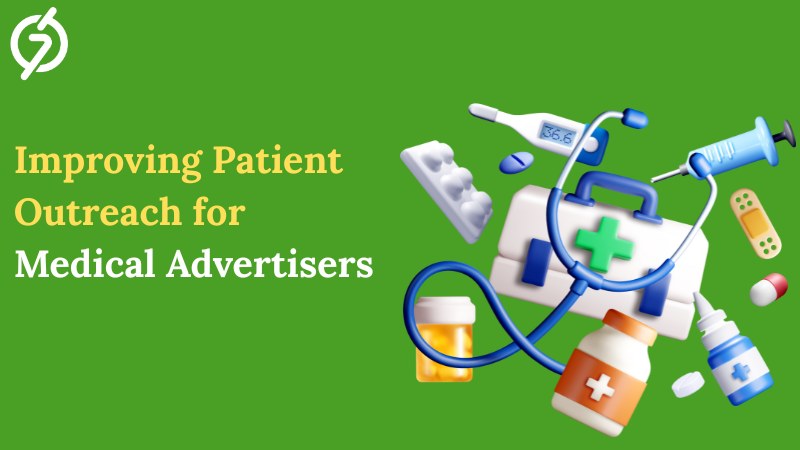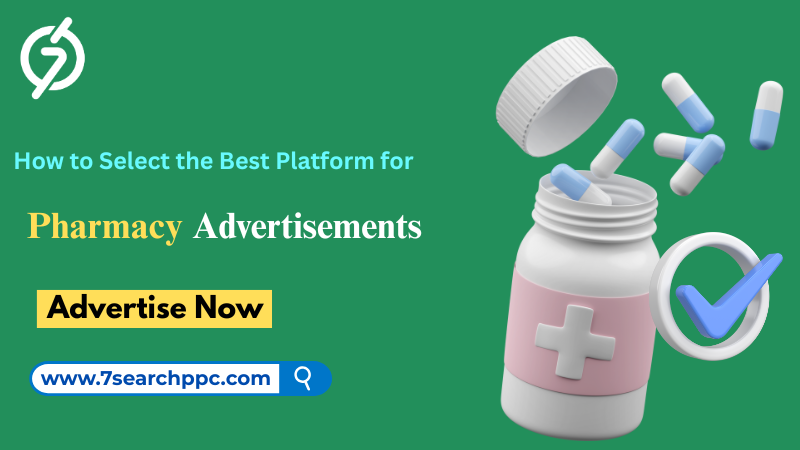
In 2025, connecting with patients effectively has never been more important for a Medical Advertiser. With patients increasingly turning to online sources for healthcare information, the strategies that medical advertising companies employ must evolve. Studies show that nearly 77% of patients research health information online before visiting a provider. This digital-first behavior makes patient outreach through online advertising a critical component of modern healthcare marketing.

The Prescription for Success
Advertising in the medical industry is fundamentally different from other sectors. Unlike consumer products, healthcare marketing carries unique responsibilities: it must educate, comply with regulatory standards, and foster trust. For medical advertisers, the challenge lies in designing campaigns that attract attention while maintaining credibility. A misstep in messaging or targeting can not only waste budget but also erode trust.
Difficulty in Engaging the Right Patients
One of the main hurdles for medical advertising companies is limited patient engagement. Generic ads, without precise targeting, often reach audiences who are not actively looking for medical services. This results in poor conversion rates and ineffective campaigns. Additionally, compliance with healthcare regulations such as HIPAA adds a layer of complexity that traditional advertisers do not face. Ensuring campaigns are effective while remaining compliant is a challenge that every medical advertiser must overcome.
Precision Matters More Than Volume
Patient outreach is most effective when it is targeted, relevant, and meaningful. High-volume campaigns may create impressions but do not always result in engagement. Medical advertisers should focus on understanding the patient journey and delivering content at the right stage. For example, a campaign for a cardiology clinic can focus on patients searching for "heart health tips" or "cardiologist near me," ensuring the ad reaches individuals with high intent. This approach improves engagement and maximizes ROI.
Leveraging a Medical Ad Network for Better Results
A Medical ad network is a powerful tool for medical advertisers. Networks provide access to premium publishers and healthcare platforms while simplifying campaign management and compliance. Through these networks, advertisers can:
Target patient segments based on demographics, health interests, and geographic location.
Ensure compliance with healthcare marketing regulations.
Optimize campaigns using analytics and real-time performance tracking.
By working with a medical ad network, campaigns become smarter, more precise, and better positioned to engage the right audience.
Strategies for Improving Patient Outreach
Search Engine Advertising for High-Intent Patients
Patients actively searching for medical services online are ready to engage. Using targeted search ads with long-tail keywords, such as "best pediatric dentist in Chicago," ensures that ads reach those with high intent. A medical advertiser can achieve measurable results while minimizing wasted impressions.
Social Media Engagement for Awareness and Trust
Social media platforms provide unique opportunities for patient outreach. Advertisers can share educational content, patient testimonials, and health tips that engage and inform. Platforms like Instagram and Facebook allow demographic and behavioral targeting to reach the most relevant patient segments, building both awareness and trust.
Retargeting Campaigns to Convert Interested Patients
Patients who visit a medical website but do not immediately book an appointment can be nurtured through retargeting campaigns. Display ads, email follow-ups, and personalized reminders keep the brand top-of-mind, increasing the likelihood of conversion.
Educational Content Marketing
Educational content builds credibility and authority. Blog posts, videos, infographics, and patient guides provide value while positioning the medical advertiser as a trusted resource. Content marketing is particularly effective for outreach because it educates patients while guiding them toward booking appointments.
Mobile Optimization for Accessibility
Most patients access healthcare information via mobile devices. Ensuring that websites, landing pages, and ads are mobile-friendly enhances user experience and improves engagement. Mobile optimization is essential for converting searches into appointments.
Analytics-Driven Optimization
Real-time analytics allow medical advertisers to track performance and optimize campaigns continuously. Metrics such as click-through rates, conversion rates, and patient inquiries inform strategy adjustments, ensuring campaigns remain effective and efficient.
Advanced Strategies for Enhanced Outreach
Personalized Messaging
Personalization is the key to engaging patients. Using AI and predictive analytics, medical advertisers can tailor messages to individual patient needs. Personalized ads improve engagement by addressing specific concerns and demonstrating empathy.
Video Marketing and Interactive Content
Video content is highly engaging. Short educational videos, patient stories, or interactive guides help patients understand treatments and services. Interactive content increases dwell time, engagement, and ultimately, patient trust.
Multi-Channel Campaign Integration
A cohesive strategy across search, social media, email, and display advertising amplifies reach. Patients encounter the brand in multiple touchpoints, increasing recognition, engagement, and conversion potential.
Compliance as a Competitive Advantage
Adhering to healthcare regulations is not just mandatory—it is an opportunity to build trust. Patients feel confident when marketing materials are accurate, transparent, and compliant. Medical advertisers who maintain compliance demonstrate credibility and professionalism.
Case Studies: Successful Patient Outreach Campaigns
Several medical advertisers have successfully enhanced patient outreach by implementing smart strategies. For instance, a cardiology clinic in New York utilized a medical ad network to target patients with heart health concerns. By combining search ads with educational video content, the clinic increased appointment bookings by 45% within six months. Another example is a dental practice in Los Angeles that leveraged social media engagement and retargeting, resulting in a 35% increase in new patient inquiries.
Future Trends in Medical Advertising
Looking forward, medical advertising will continue to evolve with technology and patient behavior. Key trends include:
AI-powered predictive targeting to anticipate patient needs.
Voice search optimization for mobile and smart devices.
Interactive patient education and virtual consultations.
Enhanced data-driven personalization for improved engagement.
Greater integration with healthcare platforms and telemedicine services.
Take Action to Improve Patient Outreach
For medical advertisers ready to enhance patient engagement, it is the perfect time to create an ad campaign with a platform designed for healthcare marketing. Leverage targeted audiences, compliant networks, and analytics-driven strategies to connect with patients effectively.
Closing Thoughts
Effective patient outreach requires a combination of strategy, creativity, and compliance. For a medical advertiser, the goal is to provide meaningful, trustworthy information while guiding patients toward the care they need. Digital campaigns, when executed with precision, not only increase engagement but also foster long-term trust and credibility. By using medical ad networks, leveraging analytics, and focusing on personalized, educational content, medical advertisers can transform outreach efforts into measurable success. Remember, in healthcare advertising, every interaction is an opportunity to make a positive difference in patients’ lives.





Write a comment ...